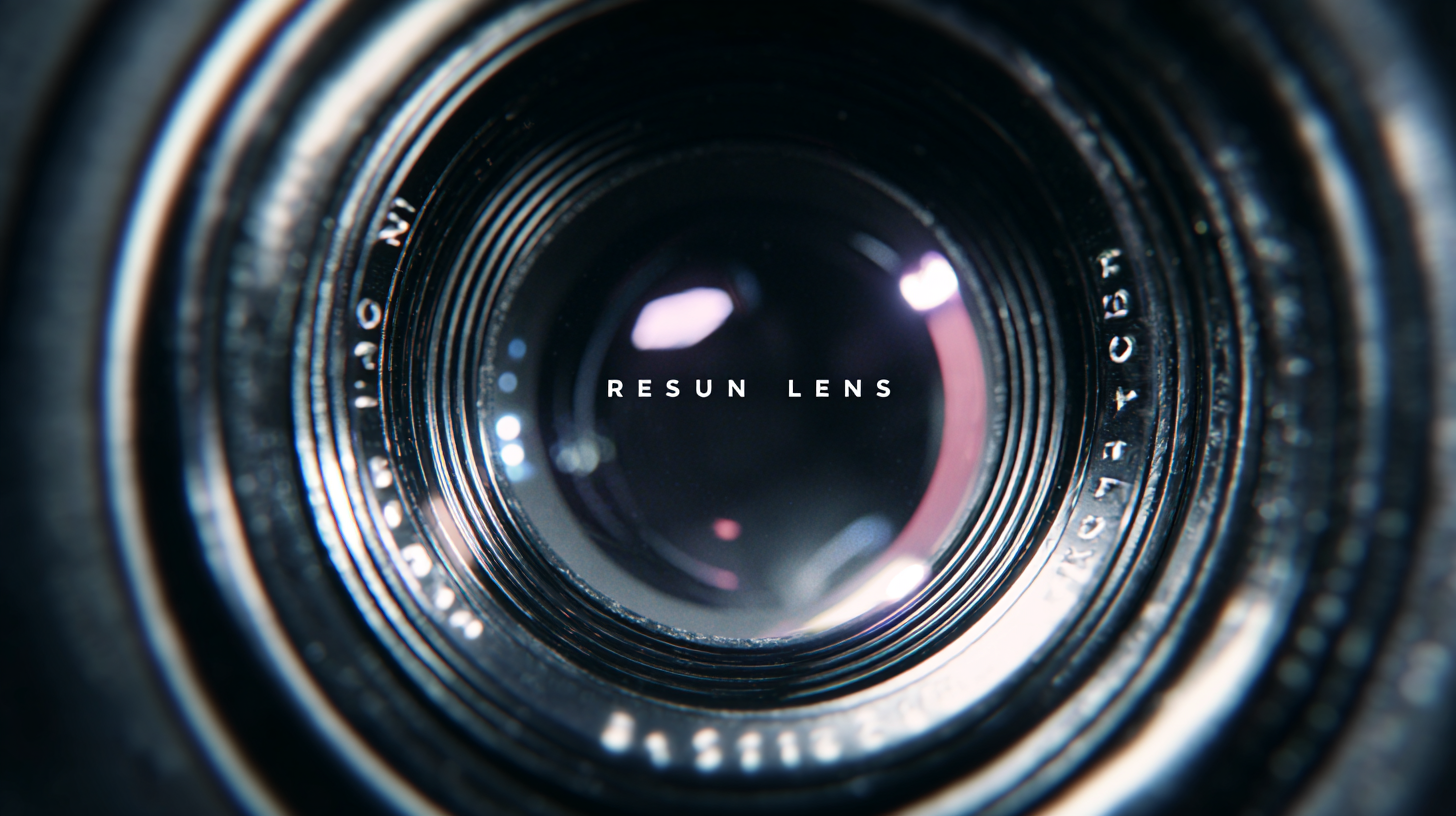In recent years, the demand for advanced optical products has surged across various industries, driving innovations in lens manufacturing. Among these advancements, Resin Lens have emerged as a game-changer, notable for their lightweight, durability, and versatility. According to a report by MarketsandMarkets, the global optical lens market is projected to reach $18.51 billion by 2025, with Resin Lenses accounting for a significant portion of this growth due to their applications in sectors ranging from consumer electronics to automotive and healthcare. The unique properties of Resin Lenses, such as resistance to impact and the ability to be molded into complex shapes, make them ideal for diverse applications, thus enhancing the performance and efficiency of optical systems. As industries continue to evolve and seek innovative solutions, understanding the characteristics and potential of Resin Lenses becomes increasingly critical.

In the rapidly evolving landscape of resin lens products, after-sales service plays a pivotal role across various industries. One of the primary advantages is the assurance of product longevity and performance. Companies that provide robust after-sales support can quickly address any issues clients encounter, ensuring that the lenses maintain their functionality and clarity. This not only boosts customer confidence but also enhances brand loyalty, as clients feel cared for and supported throughout the product lifecycle.

Moreover, effective after-sales service can lead to valuable feedback loops. When customers know they have reliable support, they are more inclined to share their experiences and suggestions. This information can be crucial for manufacturers aiming to improve their products, adapt to new user requirements, or innovate in response to market trends. By investing in strong after-sales programs, companies can ensure their resin lenses evolve in tandem with industry needs, ultimately leading to enhanced product offerings and increased satisfaction across the board.
When incorporating resin lenses across various industries, understanding cost-effective maintenance strategies is crucial for maximizing performance and longevity. According to a report by the Optical Society, the global demand for resin lenses is projected to reach $10.5 billion by 2025, emphasizing the need for sustainable practices. Regular cleaning, appropriate storage, and professional servicing can significantly extend the lifespan of these lenses, thereby minimizing overall costs.
**Tip:** Use a microfiber cloth for cleaning to avoid scratching the lens surface, and always store lenses in a hard case when not in use to prevent accidental damage.
In addition to routine care, it’s essential to adopt proper handling techniques. A study conducted by the International Society for Optical Engineering found that nearly 40% of lens damage occurs due to mishandling. Training employees on how to handle resin lenses with care can reduce maintenance issues and costs associated with replacements.
**Tip:** Implement a user guide for employees detailing the dos and don’ts of lens handling to promote consistent care practices within your organization.
| Industry | Unique Features | Applications | Cost-Effective Maintenance Strategies |
|---|---|---|---|
| Optics | High clarity, lightweight | Eyeglasses, cameras | Regular cleaning and proper storage |
| Automotive | Impact-resistant, UV protection | Headlights, dashboard displays | Routine inspections and protective coatings |
| Consumer Electronics | Scratch-resistant, lightweight | Smartphones, tablets | Use of screen protectors and cases |
| Medical Devices | Biocompatibility, precision optics | Endoscopes, microscopes | Thorough sterilization and maintenance |
| Aerospace | Temperature resistant, lightweight | Cockpit displays, sensor covers | Scheduled preventive maintenance |
Resin lenses
have gained significant traction across various industries due to their versatility and superior optical properties. In the automotive sector, for instance, manufacturers are increasingly opting for resin lenses in headlight systems. These lenses not only reduce weight, contributing to improved fuel efficiency, but also provide greater flexibility in design compared to traditional glass options. Enhanced impact resistance ensures that vehicles remain safer, even in harsh conditions, making resin lenses a preferred choice for modern automotive engineering.In the realm of healthcare, resin lenses play a vital role in medical devices and equipment. They are commonly used in endoscopes and surgical tools, where clarity and precision are paramount. The lightweight nature of resin makes it easier for healthcare professionals to maneuver devices during procedures, while their ability to withstand sterilization processes enhances their usability in medical settings. Such applications demonstrate how resin lenses are transforming the way industries approach design and functionality, pushing the boundaries of what's possible in product development.
When comparing the repair costs associated with resin lenses and traditional glass options, a noteworthy trend emerges: resin lenses often present a more economical choice for businesses. According to a recent industry report by Smith Optics Research, the average cost of repairing resin lenses is approximately 30% lower than that of glass lenses. This cost advantage is attributed to the inherent durability of resin materials, which are less prone to shattering and can withstand a significant amount of wear and tear.

Furthermore, resin lenses generally require less frequent replacement due to their impact resistance and lightweight nature. A study published by the Optical Manufacturers Association indicates that resin lenses last on average 1.5 times longer than traditional glass, further driving down long-term costs for companies that depend on precision optical equipment. The reduction in repairs and replacements not only saves money but also enhances operational efficiency in a variety of sectors, from manufacturing to healthcare, where high-quality optical performance is critical.
The advent of resin lenses has catalyzed significant advancements across various sectors, particularly in emerging technologies such as augmented reality (AR) and virtual reality (VR). According to a report by ResearchAndMarkets, the global AR and VR market is projected to reach $571.42 billion by 2025, reflecting a compounded annual growth rate (CAGR) of 63.3%. The lightweight and flexible nature of resin lenses allows for more comfortable, wearable designs, which is critical in enhancing user experience in immersive environments. This transformation not only improves visual performance but also opens new avenues for innovation in application designs.
In addition to AR and VR, resin lenses are finding transformative applications in the automotive industry. A recent market analysis from MarketsandMarkets states that the automotive lens market is expected to grow from $4.3 billion in 2020 to $8.7 billion by 2025, at a CAGR of 15.4%. Here, resin lenses are essential in the production of advanced driver-assistance systems (ADAS), enhancing safety through improved sensor accuracy and clarity. The ability to customize these lenses for specific light conditions and purposes provides automotive manufacturers with the tools necessary to integrate cutting-edge technology while optimizing overall vehicle performance. The versatility of resin lenses continues to establish them as a cornerstone in the evolution of modern technologies across diverse industries.

